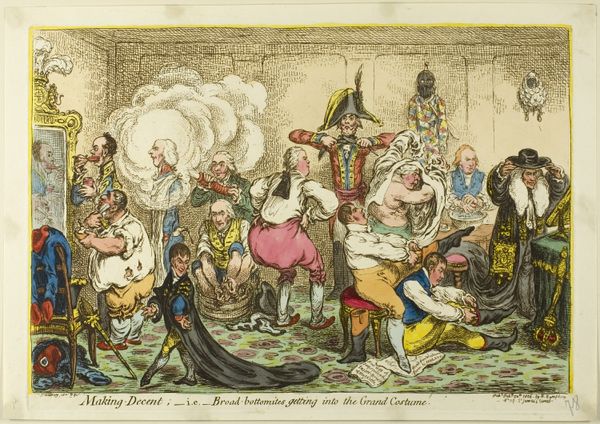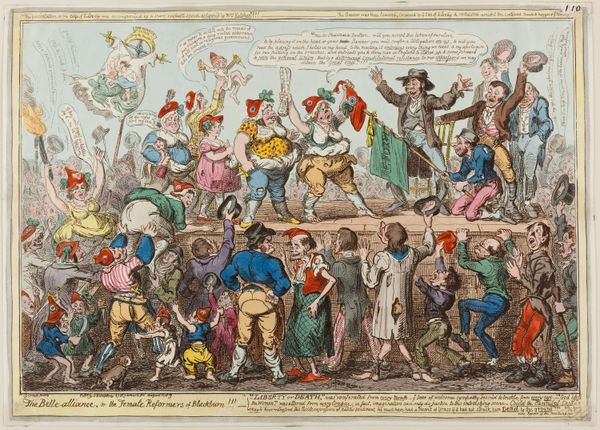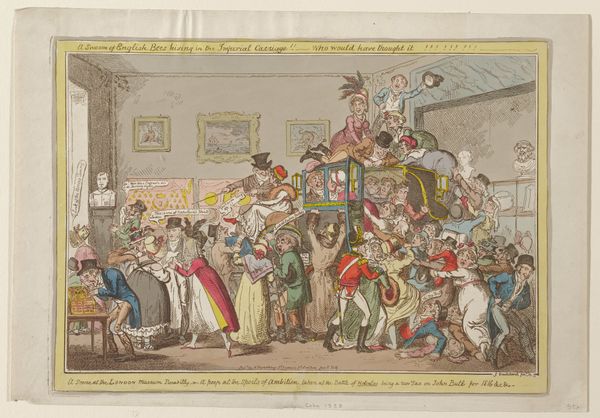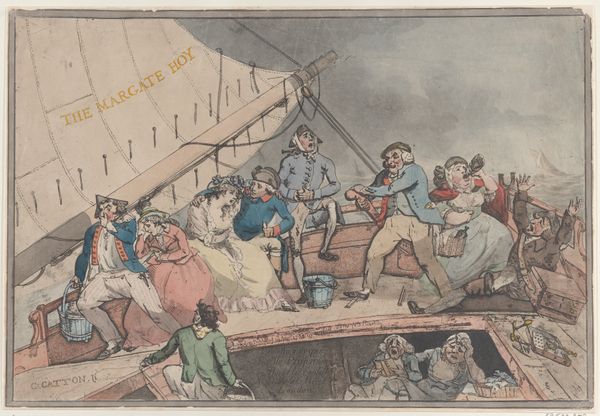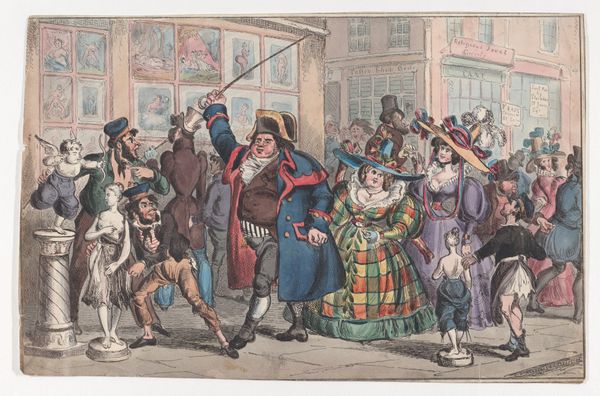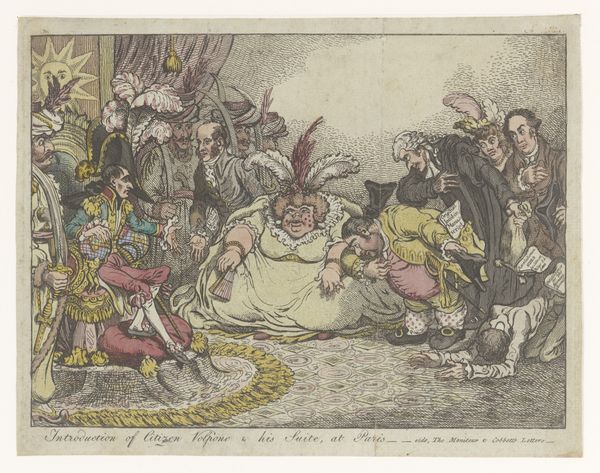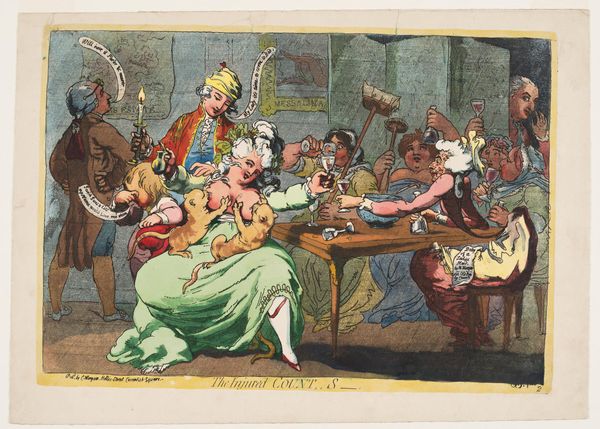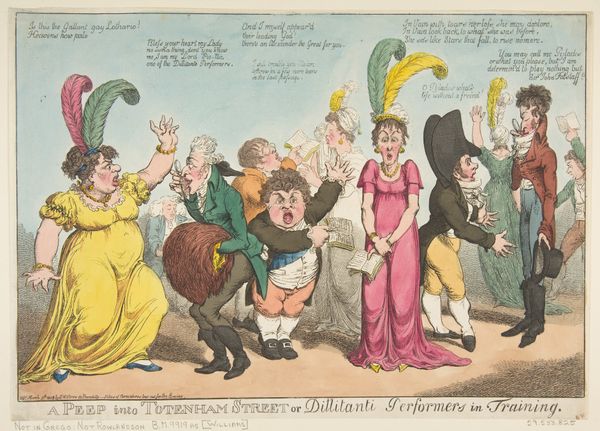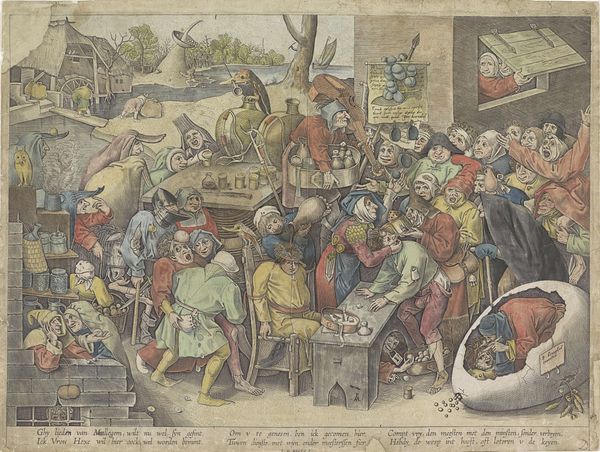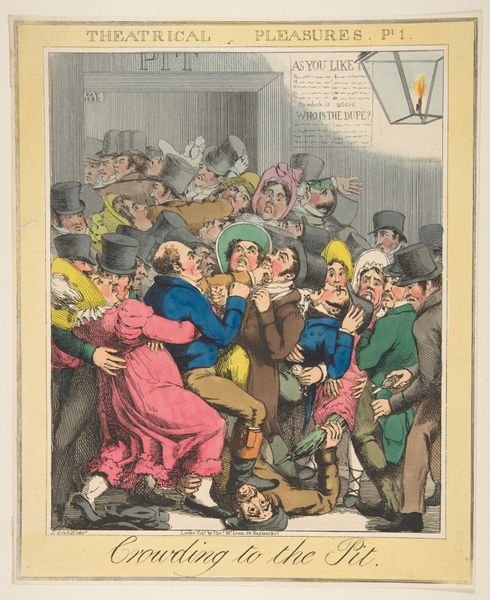
drawing, coloured-pencil, print
#
drawing
#
coloured-pencil
#
narrative-art
# print
#
caricature
#
coloured pencil
#
romanticism
#
genre-painting
Copyright: National Gallery of Art: CC0 1.0
Curator: What strikes me immediately is the grotesque humour, the sheer relish with which the crowd participates in what can only be described as ritual humiliation. It’s incredibly dark. Editor: Indeed. Here we have Thomas Rowlandson's "Ducking a Scold," created in 1809. The medium used appears to be colored pencil with print elements. It portrays a form of punishment quite common in earlier centuries, though waning by this point: the ducking stool. Curator: The stool, yes. Strapped in and plunged into water - what an intensely potent symbolic gesture to cleanse perceived female wickedness, or even just silence dissenting women in the community. I notice that while the community seems united in laughter, they might feel dread, in other circumstances be subjects, be accused by their husbands. Editor: It served as a public spectacle intended to maintain social order. Look at how the artist captures this dynamic - observe the varied reactions within the crowd. The people carry items like pans and other noisemaking tools, creating further humiliation and punishment, they celebrate punishment! Curator: The grotesque quality is heightened by the exaggerated features Rowlandson gives to everyone involved. The central figure being dunked seems genuinely terrified, overwhelmed, whilst their cat and those celebrating seem unified. The overall composition almost caricatures a societal impulse to suppress disruptive voices, personified here by the ‘scold’. Editor: Absolutely. We see here Romanticism's darker underbelly - this fascination with the human drama. The artist presents a caricature rooted in societal roles. I suggest to consider the very public performance of punishment as a means of reinforcing the rules but also questioning them, since such forms of humiliation rarely helped. Rowlandson, however, allows for critical interpretation. Curator: There's such layered meaning embedded within seemingly simple images, touching on deeply entrenched patriarchal fears and anxieties. Looking at such artefacts should reminds us of what happens to the ones being labeled “outsiders”, with our history stained by continuous acts of bullying of marginalized groups. Editor: Thank you for highlighting those points. Studying such imagery provides crucial insights into our social norms, political tensions, and cultural behaviours that might appear anedoctal, but can be representative for complex underlying mechanisms of social interactions and relations.
Comments
No comments
Be the first to comment and join the conversation on the ultimate creative platform.

